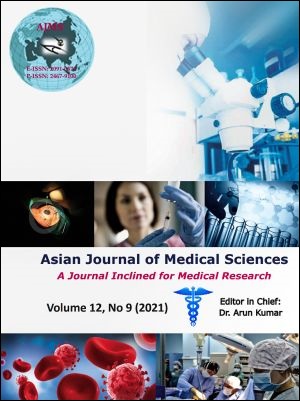Case series on congenital malaria from a tertiary care hospital in North Eastern India
Keywords:
Congenital, Malaria, Placenta, SyncytotrophoblastAbstract
Malaria in early life is due to transfer of parasitized maternal red blood cell across placenta or direct transfer of parasite from placental syncytotrophoblast. Congenital malaria is defined as malaria acquired from mother in prenatal or perinatal period. Most of the cases in endemic area, passive transfer of high amount of maternal IgG antibody binds to malarial antigen and various components of parasites giving rise to various atypical clinical presentation. This case series will help neonatologist to think malaria in all non-specific symptoms of inconsolable cry, poor feeding, lethargy, even persistence of physiological jaundice. Very few reports of congenital malaria from India is reported in literature. Our series of five cases will address these few atypical symptoms.
Downloads
Downloads
Published
How to Cite
Issue
Section
License
Copyright (c) 2021 Asian Journal of Medical Sciences

This work is licensed under a Creative Commons Attribution-NonCommercial 4.0 International License.
Authors who publish with this journal agree to the following terms:
- The journal holds copyright and publishes the work under a Creative Commons CC-BY-NC license that permits use, distribution and reprduction in any medium, provided the original work is properly cited and is not used for commercial purposes. The journal should be recognised as the original publisher of this work.
- Authors are able to enter into separate, additional contractual arrangements for the non-exclusive distribution of the journal's published version of the work (e.g., post it to an institutional repository or publish it in a book), with an acknowledgement of its initial publication in this journal.
- Authors are permitted and encouraged to post their work online (e.g., in institutional repositories or on their website) prior to and during the submission process, as it can lead to productive exchanges, as well as earlier and greater citation of published work (See The Effect of Open Access).




